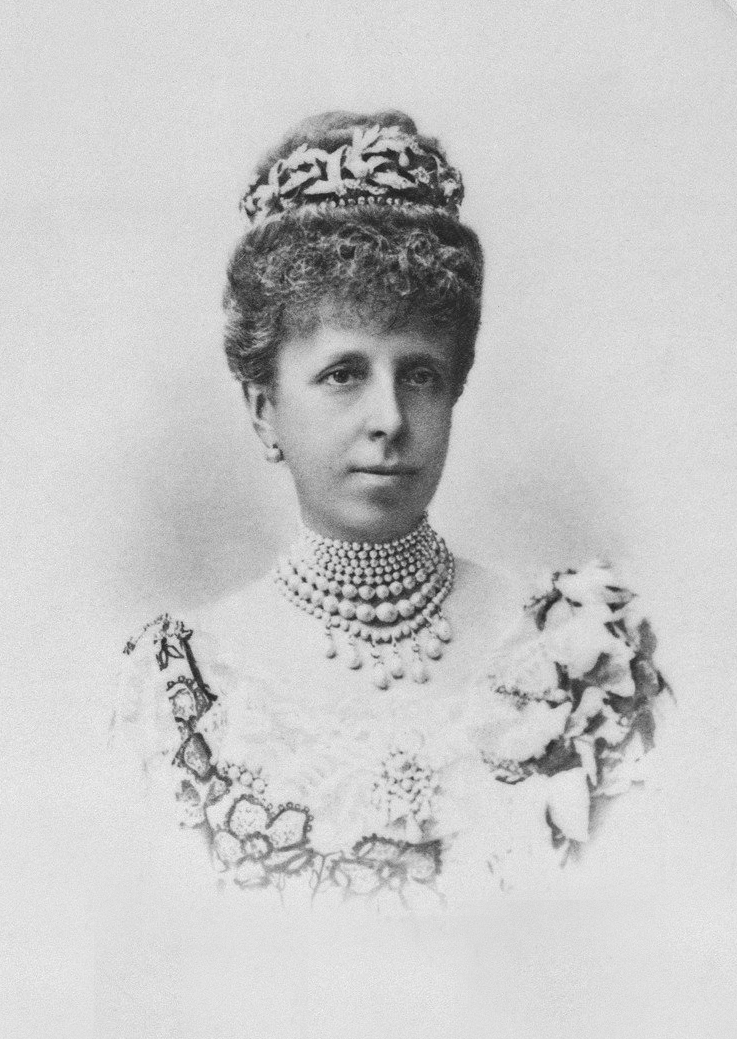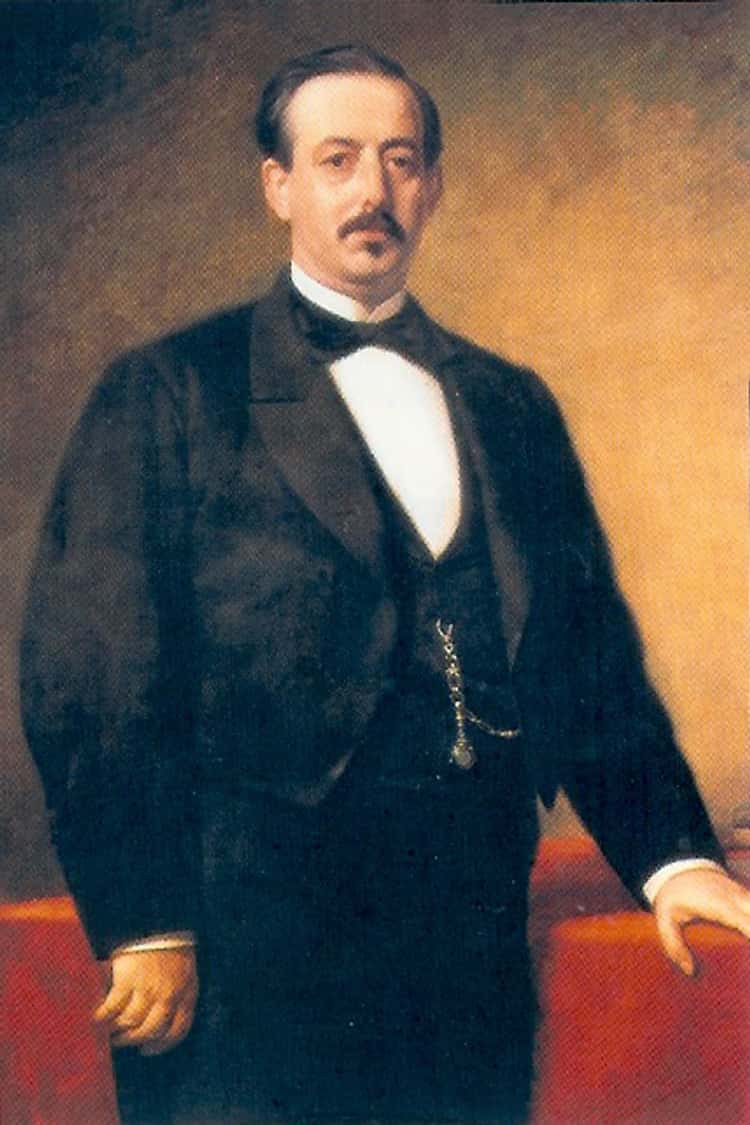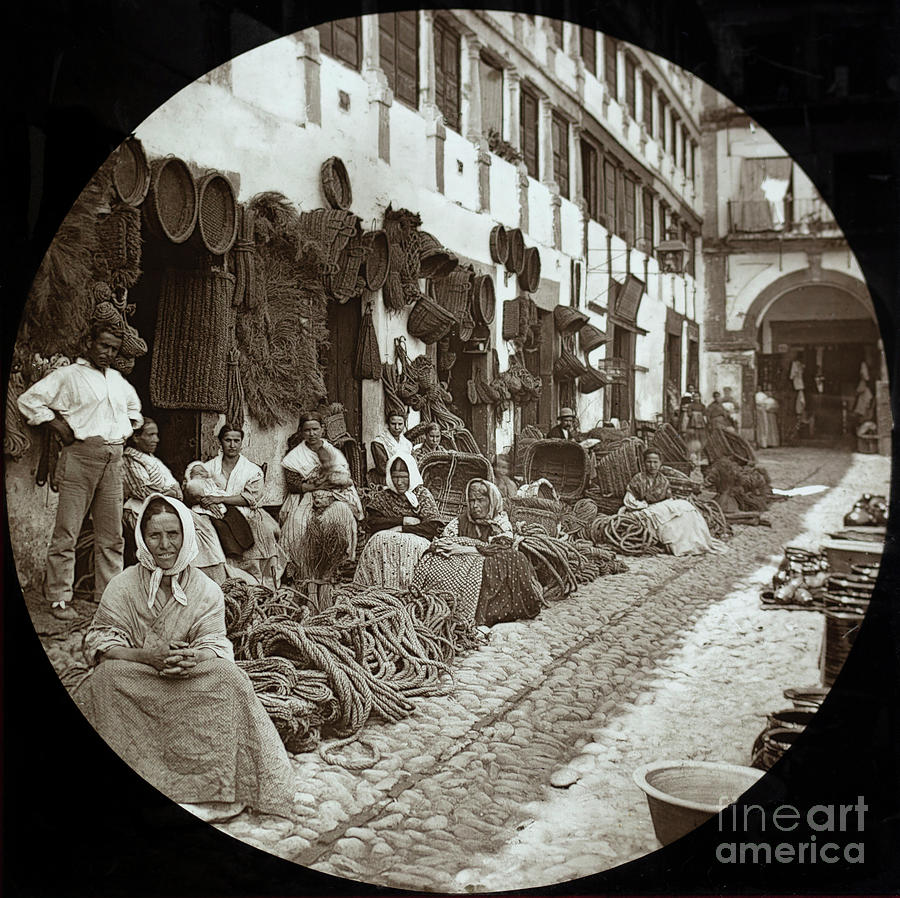Part 5, Chapter LXII
V, LXII: Do you see the Cat?

LDP cartoon espousing Georgist ideals entitled - "Do you see the Cat?" The LDP would adopt the cat as its symbol at the 1894 LDP Congress.

LDP cartoon espousing Georgist ideals entitled - "Do you see the Cat?" The LDP would adopt the cat as its symbol at the 1894 LDP Congress.
The 1890s in the Union was a period of significant political flux, marked by the emergence of new ideological currents and the reconfiguration of old ones. The era was a mix of trepidation, fear, and new ideas and ideologies emerging in the public consciousness. Debates about the merits of Actionism, Georgism, Unionism, Republicanism, and National Democracy became more prominent as a growing political consciousness emerged throughout the country. The politics of mass movements, unleashed with the emergence of the monster meetings, Rally for the Union, and eventually the Unionist Party and Social Democratic Federation, ensured that the future of power would be bedded not in smoky backrooms, but in the open, at congresses, political meetings, and rallies.
The Liberal Democratic Party (LDP) leader Henry Campbell-Bannerman, was in a unique position, as a broad, mass party, to take advantage of this growing movement. While the Unionists had scoffed at the mass element of decision-making within the LDP, preferring its guiding lights to be drawn from elite Parliamentarians, the LDP embraced the federal nature (along with the SDF) of its forebearer, the Democratic Federation. Still, it had an issue. Despite its nine principles, it did not have the crystalised or enumerated ideology shared by its rivals, the Unionists to the right and Feds to the left.
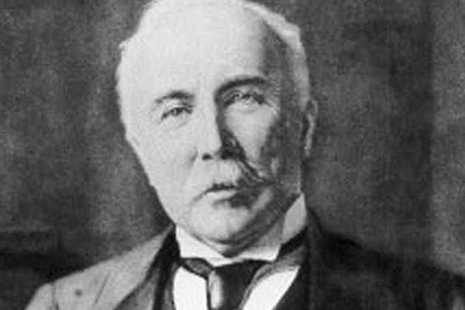
Henry Campbell-Bannerman, Prime Minister 1896-97, 1903-1906
The party felt as though it was in a great position to take advantage of the lethargy and division of the Unionists. It was considered the most mainstream republican party, controlled a number of state governments, introduced popular and effective policies at the state level, and held the second-highest number of seats aside from the rapidly fracturing Unionists. It didn’t have a unifying philosophy, however, and no one was really aware of what an LDP Union would look like.
To remedy this situation, LDP leader, Henry Campbell-Bannerman, an old-school Radical, called a congress at the Free Trade Hall, Manchester in January 1894 to establish a party platform different from his predecessor, William Harcourt. His contribution to the debate would be to propose the party unite its disparate strands through a new doctrine, one he termed “Solidarism.”
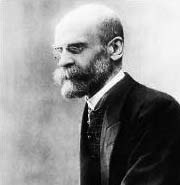
Émile Durkheim
Solidarism, introduced by Henry Campbell-Bannerman in his keynote speech to the LDP Congress in January 1894, sought to integrate a number of popular strains of policy within the progressive bloc. Chief among them was French sociologist Émile Durkheim’s concept of organic social solidarity, which argued for a society where cultural and social attributes were collectively shared, and conflicts between employers and trade unions were mediated through a moral obligation to achieve social cohesion.
Having fled France during the rise of Boulanger, Durkheim was a member of the Spencean Club, and contributed to many journals and periodicals popular with LDP members, and his beliefs achieved a following in Britain in the aftermath of the Second French Revolution. His approach to evolve the industrial capitalist society from mechanical to organic solidarity gained the attention of CB in mid-1893, and he met with the philosopher in August at a meeting of the Oxford Union and was taken by his approach. The Solidarist philosophy, adapted from his teaching, thus became the ninth principle of the “Nine Principles of Liberal Democracy,” which symbolised the LDP’s commitment to creating a fair and equitable society where labour had a voice equal to capital.
The adoption of Solidarism as part of the LDP’s platform was a move to bridge the growing chasm within the party, particularly between the Solidarists and the Liberal Imperialists, or Republican Imperialists, who advocated for a synthesis between the Imperialist doctrine of the Unionist Party and the Liberal Democratic Party. This faction, critical of the LDP's direction under William Harcourt, believed in a nationalistic and imperialist approach, emphasising the need for the party to appeal to the centre vote and embrace the new popular Imperial spirit.
While the National Democratic wing, primarily from the Celtic Bloc, influenced the Congress, it was the synthesis of Solidarism and the established principles of the party that ultimately defined the LDP’s stance. National Democracy was an extremely popular doctrine in the party and indeed worldwide, where versions of its programme were being adopted in some form by advocates in the United States and (as we will talk about soon) in Iberia. Georgism, the collective ownership of land, was a unifying factor for a significant proportion of the party. Solidarism, therefore, included the socialisation of the land and the just taxation of land ownership union-wide.
“Rather than undermine the principle of Free Land, Free Trade, Free People, Solidarism enhances and increases the ability of the party to impress a radical redistribution of power and economic opportunity away from the Regent and his class of carpetbaggers and towards the free people of the Union,” CB said in the speech. Ultimately, CB brought the Congress to a vote on a package of measures to update the Newcastle Programme.
To address the chronic confrontations between employers and trade unions, Campbell-Bannerman proposed the establishment of National Labor Councils. These councils would serve as forums for dialogue and negotiation between workers' representatives, employers, and government officials. The objective would be to create a more harmonious labor market, prevent strikes, and ensure fair wages and working conditions through consensus and cooperation rather than conflict. Significantly, the LDP leader also proposed an addendum to the electoral reform element of the party’s platform to include a measure to introduce responsible government or a “pathway toward such a government” for the colonies not yet elevated to Union status and India. Campbell-Bannerman called upon Dadabhai Naoroji MP to take the stage to endorse the reforms. Finally, to ensure that professions contribute positively to the moral organic solidarity of society, Campbell-Bannerman proposed the creation of a National Council for Professional Ethics. This council would develop ethical guidelines for various professions and oversee their implementation, promoting professional conduct that aligns with the broader social good.
CB told the Congress, “These national policies, enacted through the cooperation between States and the Union Government, will create a harmonious society that promotes organic and healthy governance. I believe our advocacy for such policies will see that the 20th century will be the Liberal Democratic century.” After it was called to a vote, the reforms passed with support from significant elements of every faction within the party. Opposition was contained to the right of the party, which opposed the interventionist line of the proposed reforms. Twenty senators were counted as voting against the reforms, ominously.
Campbell-Bannerman speaks to the LDP Congress in 1894
A memorable conflict arose when Senator Alfred Hopkinson, a stalwart of traditional liberalism, launched a vehement opposition against Solidarism. Hopkinson's critique painted Solidarism as an unrealistic utopia, too far removed from the pragmatic concerns of governance and imperial policy.
A defining moment unfolded, encapsulating the ideological tensions brewing within the Liberal Democratic Party. The assembly, already charged with anticipation over Henry Campbell-Bannerman's proposal of Solidarism, was set for a dramatic confrontation. Hopkinson rose to address the congress. His presence commanded attention, and as he began to speak, a hush fell over the room.
Hopkinson's speech was a fervent critique of Solidarism. He questioned the practicality of integrating such an idealistic doctrine into the party's platform, arguing it strayed too far from the party's core liberal principles. "Solidarism," he declared, "is a mirage, leading us away from the tried and true path of individual liberty and free-market principles that have long been our party's hallmark." His voice, laden with years of political battles, echoed through the hall, articulating a deep-seated fear that Solidarism might alienate the party's base and undermine its electoral viability.
The tension in the room was palpable as Hopkinson's words hung in the air, a challenge not just to Campbell-Bannerman but to the very direction of the party. Attendees shifted uncomfortably, the weight of the moment not lost on them. It was then that Henry Campbell-Bannerman rose to respond, his demeanor calm yet resolute.

Senator Alfred Hopkinson
Campbell-Bannerman's rebuttal was a masterclass in political oratory. He acknowledged the deep respect he held for Hopkinson, yet he did not shy away from defending Solidarism with fervor and conviction. "My esteemed colleague speaks of mirages," Campbell-Bannerman began, "yet it is the mirage of unfettered individualism that has led to the social dislocations we witness today. Solidarism is not a departure from our principles but an evolution, a moral imperative to address the injustices wrought by unchecked capitalism."
With each sentence, Campbell-Bannerman's voice grew stronger, his belief in Solidarism's potential to foster social cohesion and resolve the chronic confrontations between employers and trade unions evident. He painted a vision of a society where organic solidarity could thrive, where the division of labour evolved to benefit all members of society, not just the privileged few.
As Campbell-Bannerman concluded, asserting that Solidarism was the path forward for the LDP and the Union, a mix of applause and murmurs filled the room. The ideological divide within the party had been laid bare, but so too had the passion and commitment of its members to navigate these complex waters. This confrontation, emblematic of the broader ideological battle within the LDP, underscored the challenge of reconciling differing visions for the party's future. Yet, it also highlighted the party's vibrancy and the critical role of debate in shaping its path forward. Ultimately, though, the congress was a testament to the party’s ability to unify various factions under a common banner, signified by the adoption of the Georgist symbol, the cat – a metaphor for the clear perception of Henry George’s land reform ideas once understood. It remains the symbol of the party to this day.
The adoption of Solidarism into the LDP’s doctrine was met with both internal and external challenges. Internally, the party had to navigate the delicate balance of appeasing both the traditional liberal wing and the newer Solidarist advocates. This was evident in the negotiations that led to the “Nine Principles of Liberal Democracy,” which had to cater to various interests within the party while maintaining a coherent ideological stance.
Within the Liberal Democratic Party (LDP), the introduction of Solidarism by Henry Campbell-Bannerman stirred a cauldron of ideological dissent, most vocally from the Liberal Imperialists. This opposition brought H.H. Asquith, a junior MP, to the fore, as he critiqued Solidarism for its perceived departure from the party's imperial ambitions and its emphasis on social cohesion over economic and military strength.
Asquith articulated that Solidarism, with its focus on resolving employer-trade union conflicts and promoting social solidarity, neglected the Union's need for a robust imperial policy and a strong, centralized government capable of projecting power abroad. He argued that such internal focus could potentially weaken the Union's stature on the global stage. The debates at the congress crescendoed with Asquith’s challenge to Campbell-Bannerman, demanding a reconciliation of Solidarism with the Union's imperial imperatives.
Externally, the LDP faced the scorn of the Unionist Party, which dismissed the new program as a “conglomerate” of unpractical and faddish ideas. Yet, despite the Unionist mockery depicted vividly in contemporary cartoons, the LDP's adoption of Solidarism marked a profound shift toward a more inclusive and socially responsive political agenda. The LDP, along with the SDF, had the benefit of the development of a natural constituency - Republicans. The majority of Republicans believed that an LDP government would be the primary vehicle for delivering a Republic supported by the wider Republican movement.
The ideological pivot was a direct response to the socio-economic challenges of the time. The end of the 19th century was marked by rapid industrialisation, urbanisation, and the widening gap between the wealthy elite and the working class. The LDP's Solidarism, with its emphasis on social solidarity and functional representation, aimed to address the growing disparities and social dislocations that were becoming increasingly apparent in the Union.
The commitment to Solidarism complimented the LDP’s structural reforms and policy proposals. For instance, the party's advocacy for the separation of church and state and the disestablishment of the Unified Church of England reflected a broader move toward secular governance and the equal treatment of all religious groups under the law. This was a progressive stance that sought to diminish the institutional power of the United Anglican Church and promote religious pluralism.
The LDP's commitment to republicanism was another cornerstone of its platform. Campbell-Bannerman reiterated the party’s clear stance on the abolition of the regency and the establishment of a republic resonated with the party's base, which saw the monarchy as an anachronistic institution out of step with the principles of liberal democracy. Different groups proposed different models for a Republic, with many believing a simple replacement of the position of Regent with a President preferable, and others, like radical David Lloyd-George and the Fusionists, believing that a collective presidency would be the best way forward.
Economic reforms were central to the LDP's agenda. The party's push for compulsory powers for States to acquire lands for smallholdings and the national land value tax reflected its commitment to addressing rural poverty and the inequities of land ownership. Such policies were designed to empower rural workers and promote a more equitable distribution of land and resources.
The LDP's advocacy for educational reforms, such as linguistic reform to allow for national languages to be taught in schools, reflected its commitment to cultural pluralism. This was particularly important in the Celtic nations, where the promotion of native languages was seen as essential to preserving cultural identity. The LDP also pushed for electoral reforms, such as the direct election of the Senate, aimed to democratise the political process and make it more accessible to the working class. This was a radical departure from the traditional elitist approach to governance and reflected the party's commitment to populist principles.
In the aftermath of the LDP Congress, state governments under LDP control embarked on an ambitious implementation of Solidarist-inspired policies. In Lancashire, Herbert Gladstone initiated the establishment of Community Labor Boards in May 1894. Thie marked a pioneering move towards mediating labor disputes, significantly reducing industrial unrest. Scotland, under Edward McHugh, saw the introduction of educational reforms embedding social solidarity into curricula, aiming to foster a community-conscious youth. These policies exemplified the practical application of Solidarism, showcasing the LDP's commitment to translating ideological principles into tangible reforms that addressed the Union's socio-economic challenges.

Edward McHugh, Premier of Scotland
Despite the ambitious nature of the Solidarist platform, the LDP's reforms were not without their detractors. The Unionist Party's criticisms hinged on the belief that the LDP's platform was too disparate and lacked coherence. The Unionists contended that Solidarism was nothing more than an attempt to appease the various factions within the LDP rather than a genuine effort to address the Union's challenges. This critique was encapsulated in Chamberlain's description of the Newcastle Programme in 1892 as 'capsules made up in gelatine,' suggesting that the reforms were superficial coverings for unpalatable policies.
However, the LDP's commitment to an economy incorporating both liberal and solidarist ideals stood as a direct challenge to the laissez-faire capitalism that had led to social dislocations. The party’s promotion of capital-labour cooperation and economic democracy sought to bring about a more just and equitable society. The liberal corporatist approach, with its roots in the economic philosophies of figures like John Stuart Mill, provided a blueprint for the LDP's economic vision.
The LDP's policies on agricultural affairs and judicial reform showcased a forward-thinking approach to social and economic issues. The emphasis on cooperative tenant farming, a national land value tax, and the simplification of the Union courts spoke to a broader vision of a society where fairness and efficiency were not mutually exclusive. Campbell-Bannerman’s commitment to Georgism, a popular doctrine within the party.
However, the LDP's platform and the implementation of Solidarism would not be without obstacles. The party would have to navigate the complexities of translating its principles into actionable policies, facing opposition not just from the Unionist Party but also from within its ranks. The balance between maintaining party unity and pushing for reform would be a recurring theme in the LDP's history. The integration of Solidarism into the LDP’s platform was more than a mere political manoeuvre; it represented a philosophical realignment with the potential to transform society. The LDP recognised the emerging complexities of an industrialising nation and sought to preempt the social strife that could arise from unchecked capitalism and entrenched class divides.
The LDP's Solidarist approach did not exist in a vacuum. It drew from a rich tapestry of contemporary social thought, aiming to synthesise these ideas into a cohesive political platform. The party's commitment to social solidarity and functional representation was a nod to Durkheim's vision of a society where individuals were integrated into a cohesive whole through the division of labour.
Moreover, the LDP's Solidarism was a direct response to the Union’s socio-political climate. The late 19th century was a time of significant change, with new social movements emerging and traditional structures being questioned. The LDP's policies sought to harness these changes, channelling the energy of mass movements into a structured political program that could appeal to a wide cross-section of society.
One of the most significant challenges for the LDP was translating its Solidarist philosophy into practical governance. The Unionist criticisms that the program lacked coherence were not entirely unfounded. The LDP's platform was ambitious and wide-ranging, encompassing everything from church-state separation to land reform to linguistic and judicial changes. The party had to ensure that these various elements could be integrated into a workable policy framework that would not collapse under its own weight.
The party’s efforts to democratise the political process and make governance more inclusive were particularly noteworthy. The LDP sought to break down the barriers that had traditionally excluded the working class and other marginalised groups from political participation. By advocating for state-funded elections and the direct election of the Senate, the party was pushing for a more participatory democracy.
The LDP's Solidarist platform also had an international dimension. The party's advocacy for peace and its opposition to war aligned with the broader international movement towards pacifism and conflict resolution. The LDP's vision of a society based on social solidarity extended beyond the Union’s borders, reflecting a desire for a more peaceful and cooperative international order. Its ideological evolution through the adoption of Solidarism did not occur in isolation but was part of a larger political narrative that included interactions with the Unionist Party and the Social Democratic Federation (SDF). The Unionists, led by Salisbury, derided the LDP's shift as a naive surrender to idealism, lacking in practicality for governance.
Meanwhile, the SDF criticized the LDP for not going far enough, advocating for a more radical overhaul of society that would dismantle the existing capitalist structures. The chapter should explore a series of public engagements, debates, and rallies where LDP leaders, faced with opposition from both the right and the left, defended Solidarism as a balanced approach to social reform, aiming to carve a distinct political identity for the party amid the Union's turbulent political waters. This section should highlight the LDP's navigational challenges and successes in positioning itself as a viable alternative to both the conservative Unionist stance and the radical socialist proposals of the SDF, underscoring the competitive yet occasionally cooperative dynamics that defined the era's political landscape.

Free Trade Hall, Manchester, site of the LDP Congress 1894
In conclusion, the LDP's adoption of Solidarism at its 1894 Congress was a seminal event that reflected the party's commitment to progressive reform and social cohesion. It marked a shift from the politics of pure liberalism towards an approach that sought to integrate the working classes and address the societal impacts of industrialisation and capitalism. The LDP's Solidarist doctrine acknowledged the importance of community and collective responsibility, challenging the individualistic ethos that had dominated the political narrative.
Solidarism was, in many ways, ahead of its time. It anticipated the social welfare policies and corporatist structures that would become more common in the 20th century. The party's efforts to create a moral solidarity based on professions organised into a single public institution were an early attempt to reconcile the interests of labour and capital. This issue would continue to be a central theme in social and economic policy.
The LDP’s platform also indicated an early recognition of the importance of diversity and pluralism within a democratic society. By advocating for linguistic reforms and the rights of different nationalities to co-exist within the Union, the LDP laid the groundwork for what would become a multi-culturalist policy approach. However, the LDP's vision was not without its flaws. The challenge of implementing such a comprehensive platform was significant, and the party struggled with internal divisions and external opposition. The need to maintain party unity while pursuing a progressive agenda would remain a delicate balancing act for the LDP leadership.
Furthermore, the LDP's Solidarist platform faced the inevitable tension between idealism and pragmatism. While the party's principles were laudable, the realities of political power and the resistance from entrenched interests meant that the LDP's reforms would be hard-fought. The Solidarist vision required not just political will but also a societal willingness to embrace change.
The 1894 LDP Congress can be seen as a critical juncture that set the stage for future debates on social policy, governance, and the role of the state in regulating the economy. The Solidarism espoused by the LDP highlighted the evolving nature of liberalism and its capacity to adapt to the demands of a changing society. Within 18 months, CB would have the chance to enact his policies but would be hampered in his effective deployment of the philosophy with the outbreak of conflagration on the continent.
